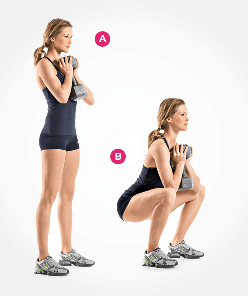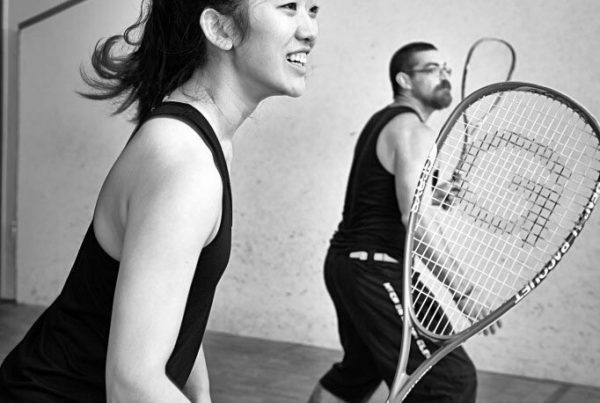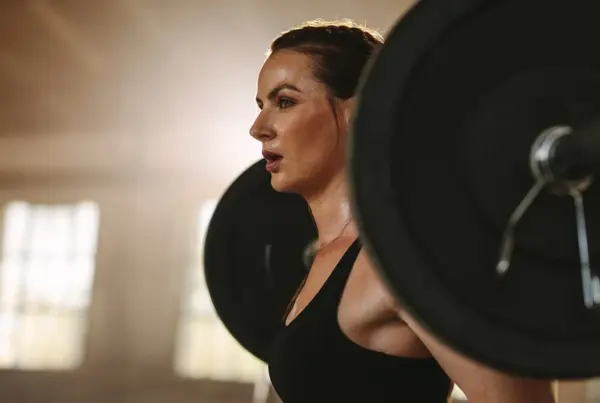Baby got back? Then she must be squatting
I did some really good squats this week in the gym and my bum and legs are still sore (a slightly uncomfortable yet good feeling)! This has inspired me to share with you what a great exercise they are and encourage you to include squats, or a variation of, in your current training program.
 Firstly you’ll need correct squat technique. Stand with your feet just a fraction wider than hip width apart, with toes a little outward. Keep your head facing forward and your chest held up and out. You can put your hands on your hips but you miight find holding them straight out in front of you at shoulder height helps with balance. Sit back and down like you’re lowering your bottom onto the edge of an imaginary chair. Keep your head up, your body will bend forward naturally but rather than allowing your back to round, let your lower back arch lightly and keep your chest puffed out as you descend. Press your weight back into your heels and lower down so your thighs are as parallel to the floor as possible, with your knees over your ankles. Keep your shoulders back and down, belly button to spine to protect your lower back and push through your heels to bring yourself back to the starting position.
Firstly you’ll need correct squat technique. Stand with your feet just a fraction wider than hip width apart, with toes a little outward. Keep your head facing forward and your chest held up and out. You can put your hands on your hips but you miight find holding them straight out in front of you at shoulder height helps with balance. Sit back and down like you’re lowering your bottom onto the edge of an imaginary chair. Keep your head up, your body will bend forward naturally but rather than allowing your back to round, let your lower back arch lightly and keep your chest puffed out as you descend. Press your weight back into your heels and lower down so your thighs are as parallel to the floor as possible, with your knees over your ankles. Keep your shoulders back and down, belly button to spine to protect your lower back and push through your heels to bring yourself back to the starting position.
What muscles do squats work?
The squat is a classic, multi-joint exercise that targets a variety of muscle groups throughout your body, with an emphasis on those that extend your hip and knee joints. Squats work the entire lower body, specifically the quads, hamstrings, glutes, and the muscles that make up the calves. A wider stance brings the inner thighs more into play, whereas a closer stance will get the outer firing more. If you’re looking to burn fat, the squat is a great exercise because it triggers a lot of your body’s muscles!
Some squat variations
Jump Squat – Squat down as if you were doing a regular bodyweight squat and then explosively jump as high as you can, letting your arms swing naturally for momentum. When you land, immediately squat down and jump again.
 Goblet squat – I like to do these with a kettle bell, but if you don’t have a kettle bell handy a dumbbell works just as well. Whichever weight you choose just hold it in close to your chest and keep it in that position as you go down and up. This one really works the front of the body so be sure to keep those abs locked in tight.
Goblet squat – I like to do these with a kettle bell, but if you don’t have a kettle bell handy a dumbbell works just as well. Whichever weight you choose just hold it in close to your chest and keep it in that position as you go down and up. This one really works the front of the body so be sure to keep those abs locked in tight.
Barbell Squat – this is the one that most people think of when you say ‘squat’ and my personal favourite. Perform your squat with a weighted barbell on your back – just like you would in a BodyPump class. Hold the bar with an overhand grip and be sure not to roll it up into the back of your neck, keep it accross the shoulders. Get a trainer to check your technique and help you pick the correct weight for you.
 Dumbell Split Squat – you might think this is a fancy name for a lunge, and if you’d prefer to call it that I’m really not worried. You need to grab a pair of dumbbells (or kettle bells) letting them hang by your sides. Step one leg forward being sure to keep the foot in front of the hip (not in front of the body’s mid-line which can cause you to over balance). Slowly drop your back knee to the floor as far as you can. Pause, then push yourself back up to the starting position as quickly as you can.
Dumbell Split Squat – you might think this is a fancy name for a lunge, and if you’d prefer to call it that I’m really not worried. You need to grab a pair of dumbbells (or kettle bells) letting them hang by your sides. Step one leg forward being sure to keep the foot in front of the hip (not in front of the body’s mid-line which can cause you to over balance). Slowly drop your back knee to the floor as far as you can. Pause, then push yourself back up to the starting position as quickly as you can.
Quick butt and all-over workout
- 10 (each leg) dumbbell split squats, alternate with 10 (each arm) dumbbell rows 4 x
- 15 goblet squats, alternate with 15 push-ups 4 x
- 20 jump squats, alternate with 20 sit-ups (or abs of your choice) 4 x
Try it next time you’re in at the gym and let us know how you go! Remember it’s free for members to book in with a Hiscoes personal trainer to update your program. Get the trainer to check your squat technique and make sure your new program includes some form of squats!



